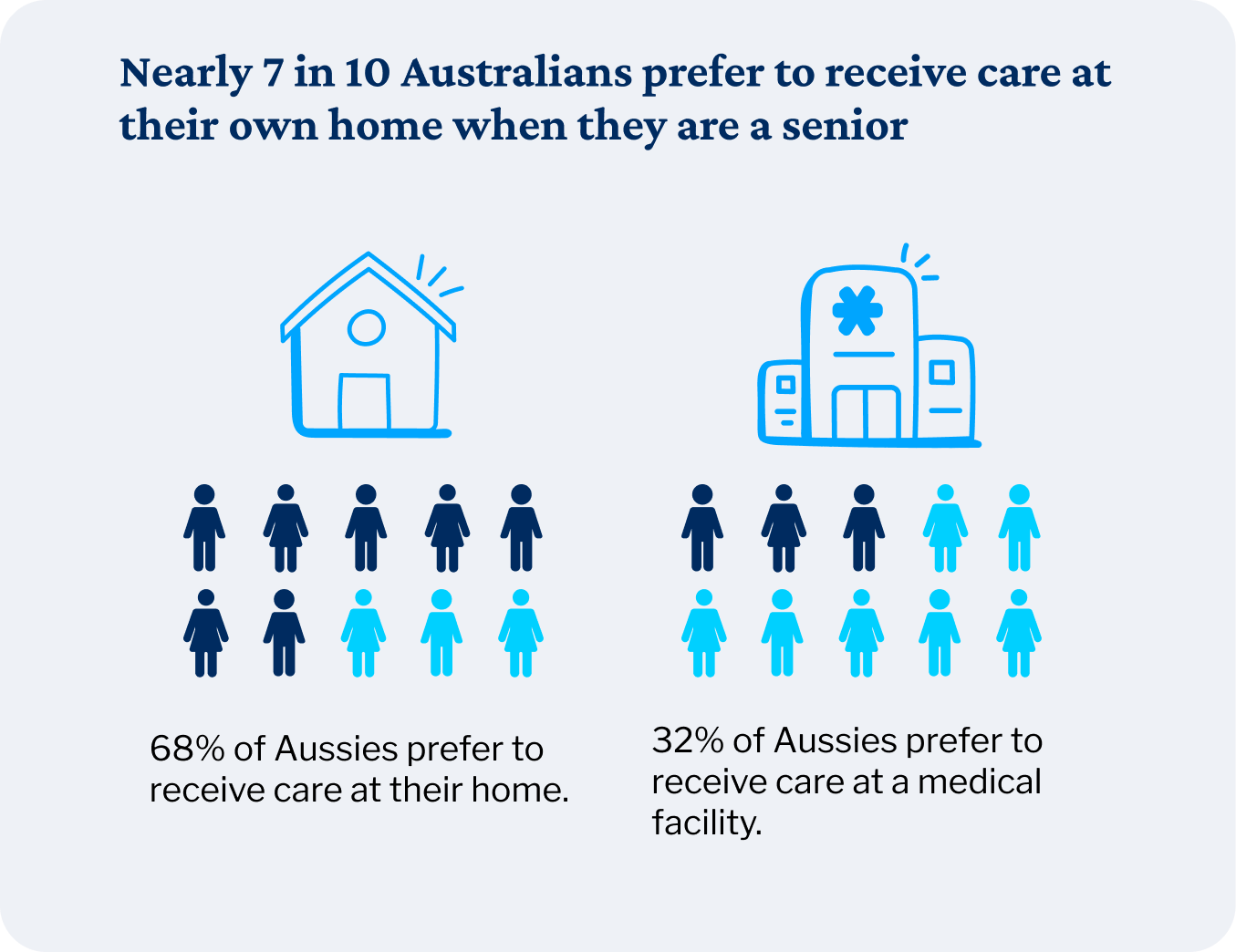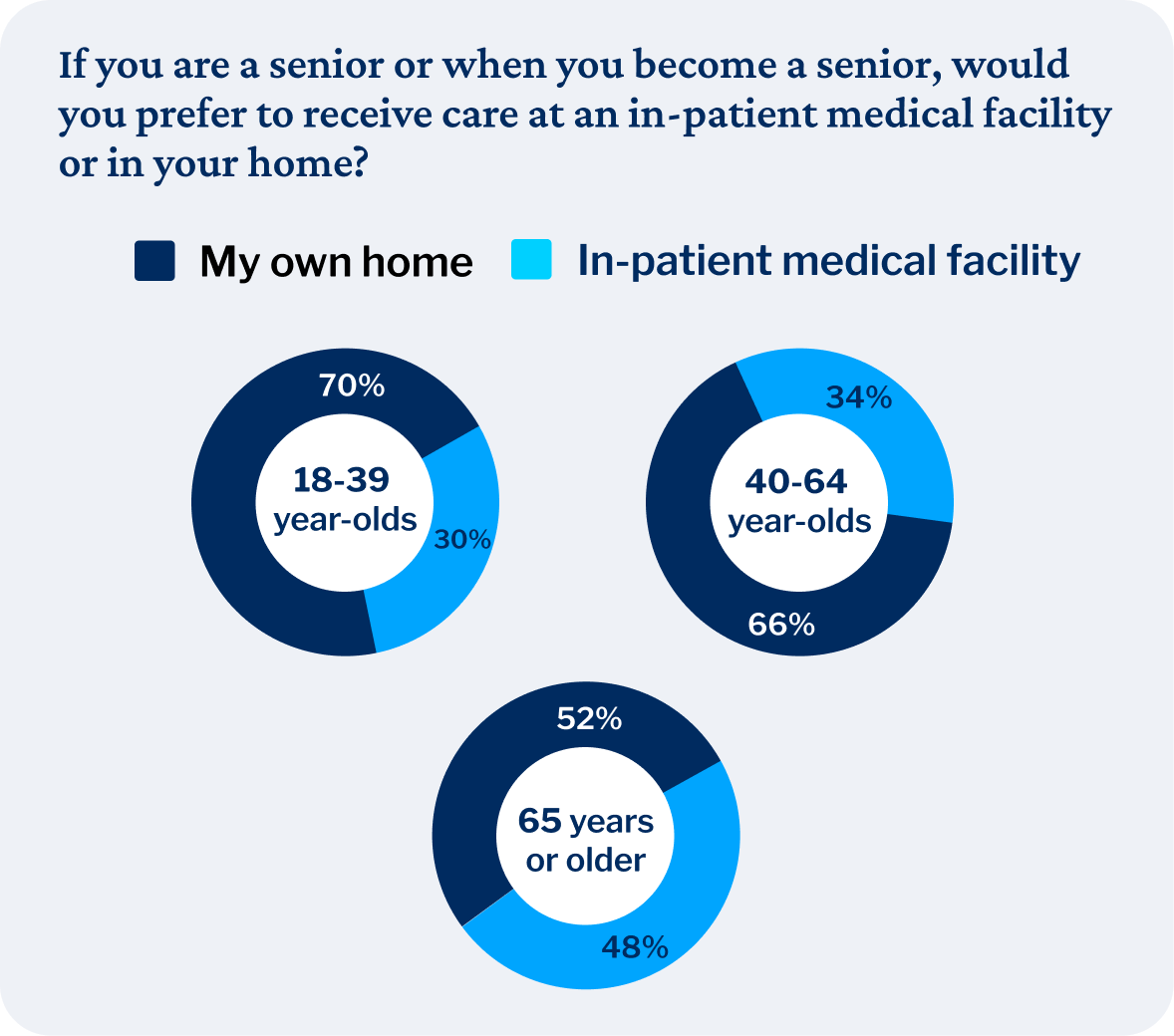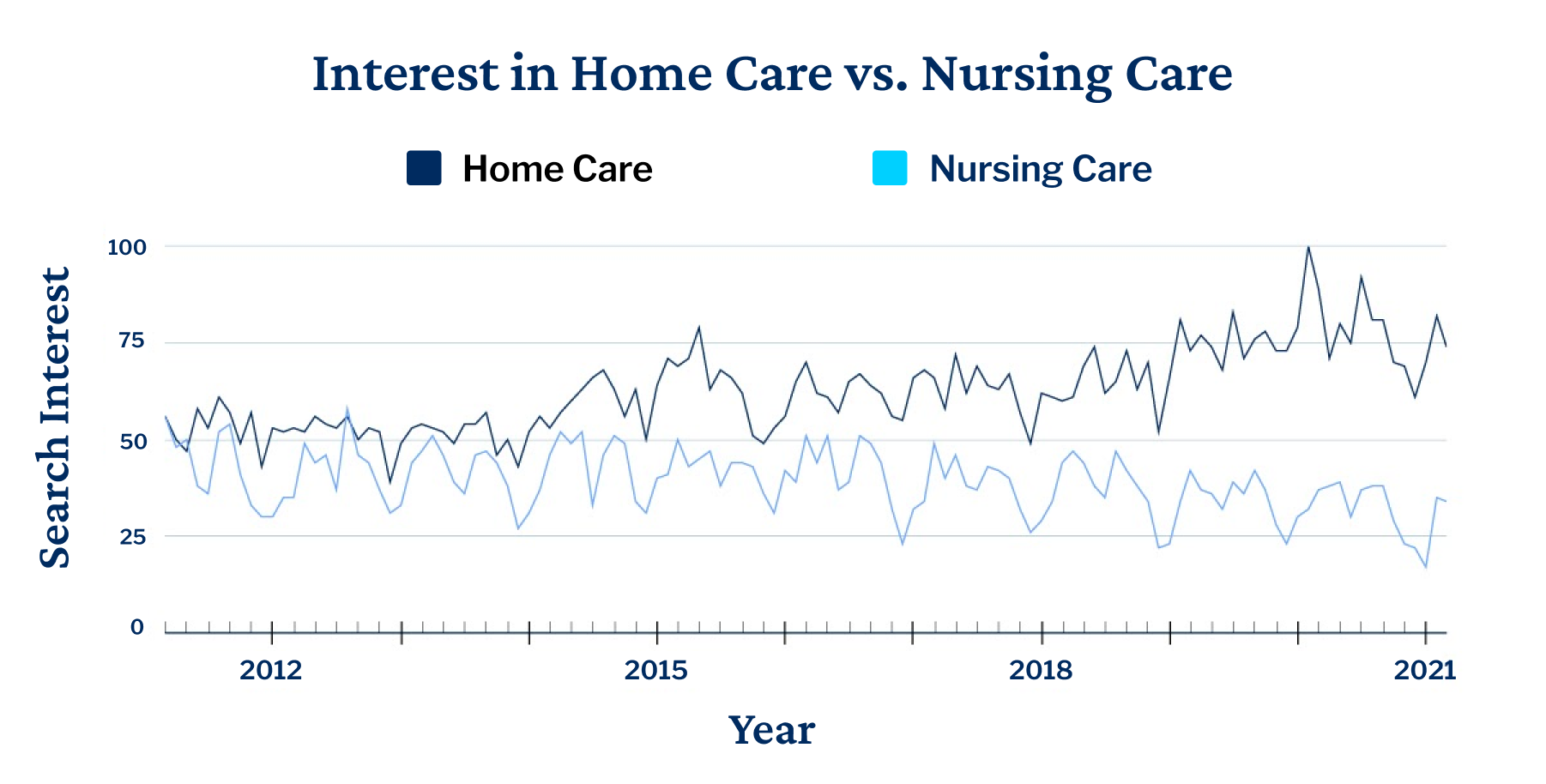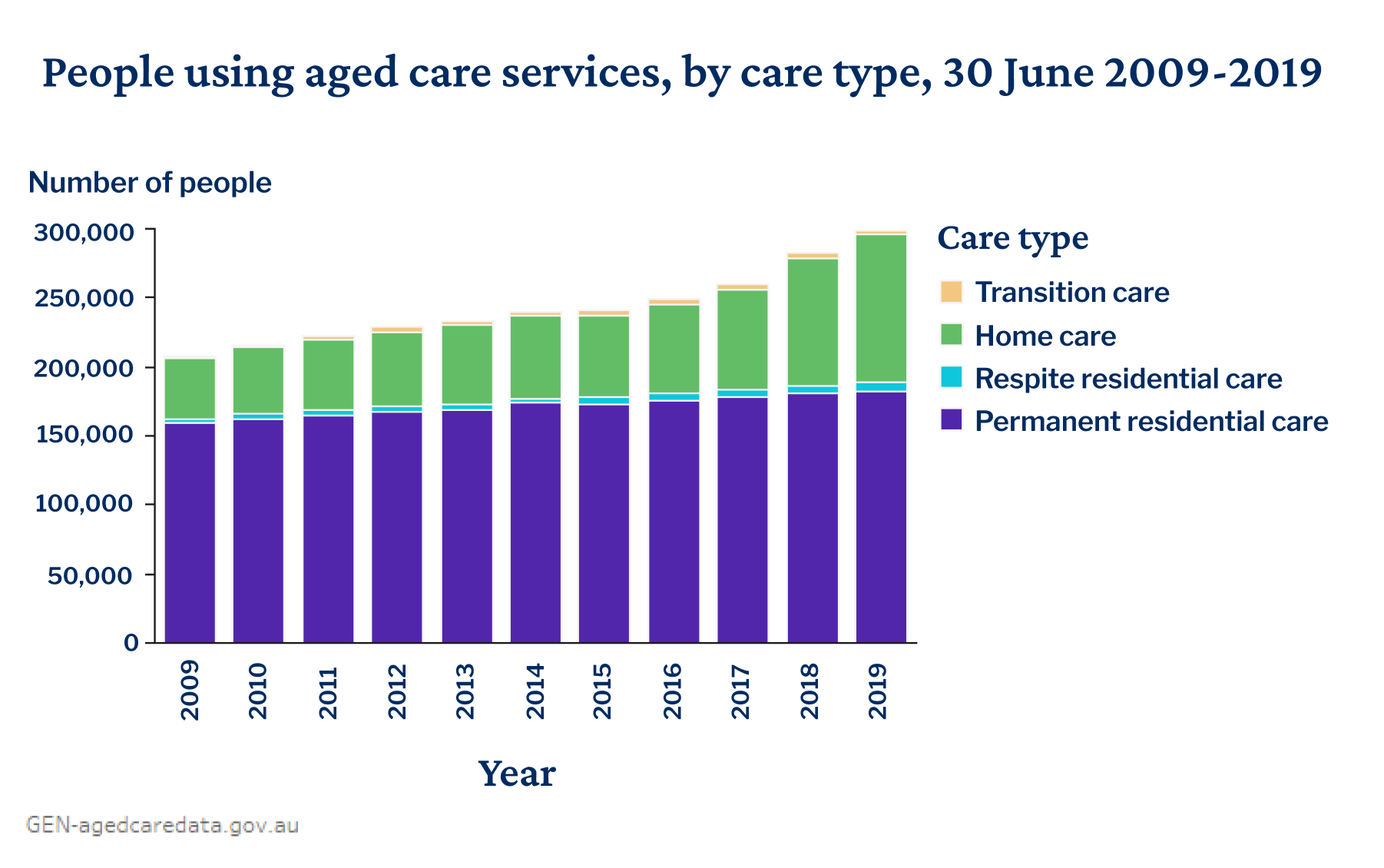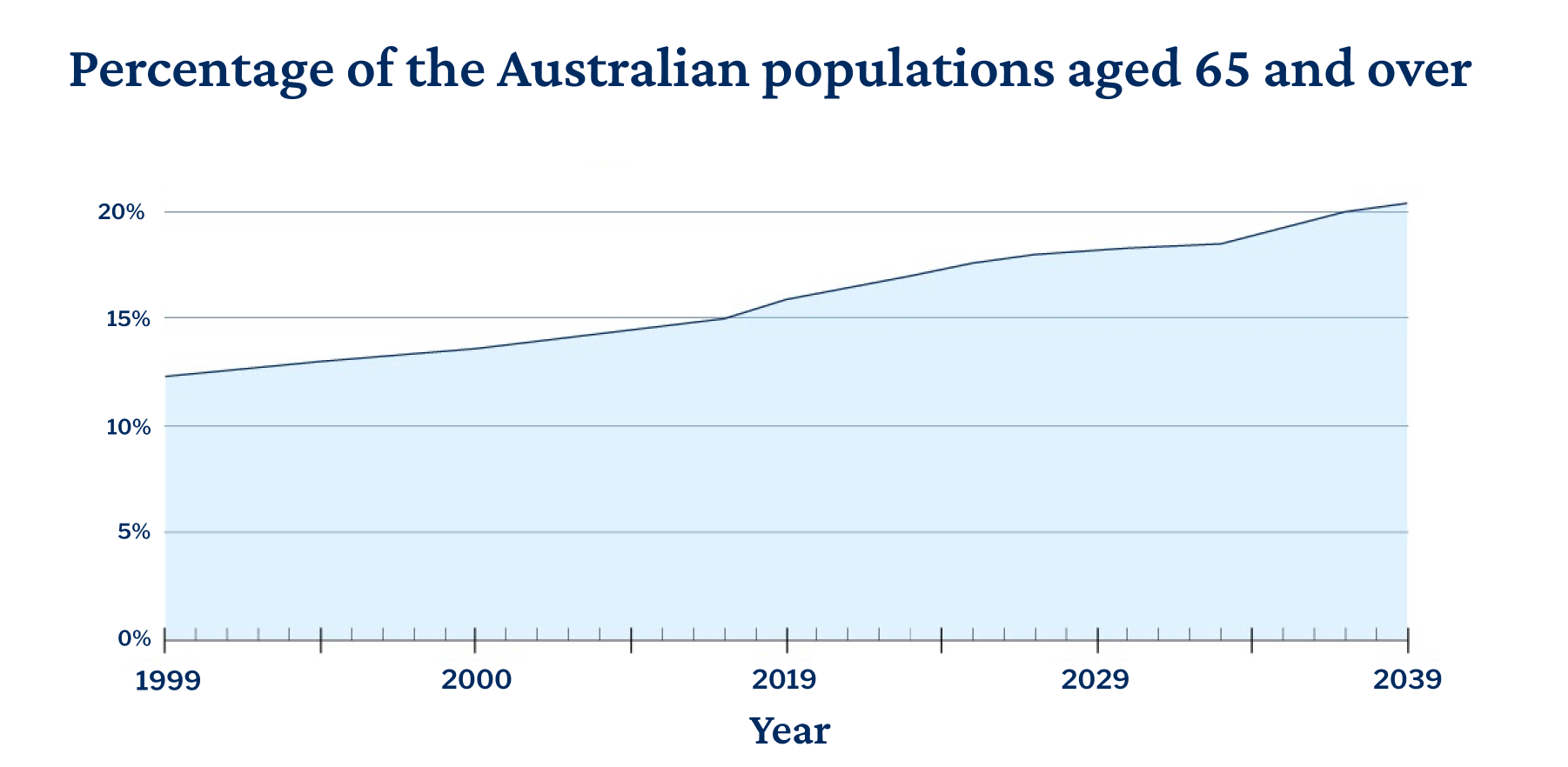Most people hope to stay active and independent as they grow older. But for many elderly Australians, the physiological changes of ageing mean making difficult choices. It could be as simple as blurry eyesight telling you it’s time for reading glasses or the onset of a serious illness that tells you it’s time for more support. Eventually, older individuals must decide: move to a residential nursing home to receive around-the-clock care or apply for a Home Care Package to get the support they need at home.
It’s an important question, not just for individuals but for the country as a whole. The Australian population is ageing: about 14% of Australians are older than age 65. And that number is going up. Rising longevity is increasing demand for aged care in a system that’s already strained. Solving this problem requires innovative solutions to meet the healthcare needs of an evolving country.
Summary of Findings
A survey by The CareSide reveals valuable new information on the subject. The survey asked where Australians want to live as they age.
The findings demonstrate a significant majority would prefer to live at home and receive home care as they age.
However, that preference varied by age. Among younger adults ages 18 to 39, 70% said they would prefer to receive care at home, and only 30% would want to live in a facility. Among respondents 40-64 years old, the percentage decreased slightly: 66% wanted care at home, and 34% would prefer a facility. For respondents aged 65 or older, the difference was even smaller: only 52% said they would prefer care in their homes, while 48% said they would prefer inpatient care.
The survey didn’t address why respondents chose the option they did. But we can speculate about why older Australians are more open to receiving care at medical facilities.
For example, we know that many elderly Australians are already living in residential care. And there’s research to suggest that people, especially older ones, prefer the option they’ve chosen after a decision is made.
It’s also possible that many physicians view residential care as lower risk than home care and therefore recommend it more frequently. Many elderly Australians are resigned to residential care, even though they wouldn’t prefer it. One 2019 study quoted a 93-year-old woman who said, ‘I accepted…that I needed to be here where people can look after me, even though I don’t have my own privacy and my own rights.’
Whatever the reason, it’s clear that most Australians would prefer to receive care at home. But the stronger preference among younger people leads to an important question: Is interest in home care on the rise? And if so, what does that mean for Australia’s aging population and the healthcare system?
Increased Demand for Home Care
Google Trends provides a simple way to measure interest in a topic over time. The tool analyses the popularity of online searches on a scale of 0-100 . A value of 100 represents peak popularity for a term. By comparison, a value of 50 means the term is half as popular.
In March 2011, interest in the phrase “home care” in Australia was the same as “nursing care.” Both terms had a score of 57.
Since then, interest in home care has trended up while it has declined for nursing care. As of March 2021, home care has a score of 79 while nursing care has dropped to 33.
There’s evidence that these preferences play out in the utilisation of services. Government data on aged care services shows the number of people receiving Home Care Packages increased by 142% from 2009 to 2019. Among Australians who receive aged care services of any kind, 36% used Home Care Packages in 2019, compared to only 21% in 2009.
However, the majority of elderly Australians who need care are still using residential services. Among people who used aged care, 62% were living in permanent residential care in 2019. Although that’s a significant percentage decrease from the 76% who were in residential care in 2009, the total number of people in residential care has increased slightly over the last ten years. Its percentage decrease is due to the increase in elderly population and the growing use of home care.
In 2009, approximately 208,000 individuals received aged care services. Of this group, 76% received care at a permanent medical facility while 21% received care at their home.
By 2019, over 299,000 Australians used aged care services. Out of this cohort, 61% received care at a permanent medical facility and 36% at their own home. In other words, more Australians are requiring aged care services, and demand is shifting more towards home care.
The Personal Benefits of Home Care
Despite the rapid growth of home care and the clear preference for it among participants, the number of Home Care Packages available isn’t close to meeting the demand. As of December 2020, over 95,000 people were still waiting to receive a Home Care Package at their approved level. People on the waiting list might make use of a lower level interim package, or they might opt for residential care instead due to its shorter (though still significant) wait times.
This represents a challenge for the aged care system. Although health outcomes are mostly comparable in the two environments, patient experiences are not. One review of what elders say about residential care found several key themes: people in nursing homes want to experience a feeling of connectedness, a homelike environment, and caring health providers.
Residential care can’t provide those experiences as effectively as home care. Elderly people have usually lived in their home for many years and built relationships with neighbors and the surrounding community. Even small daily interactions, like the conversation with a local postal worker or a familiar grocery cashier, provide a network of social support. Moving to residential care requires building a new community. This can be difficult and stressful. An inpatient environment, no matter how well-designed, can never be as homelike as one’s private home.
There are other disadvantages that affect people’s experiences in residential care, such as the loss of privacy, independence, and autonomy. In order to provide for the needs of everyone living there, care homes often require residents to follow a strict schedule of meals, activities, and sleep. Residents must often share bedrooms and bathrooms, which can negatively impact sleep and toileting needs. Home care, on the other hand, enables elders to continue to enjoy autonomy, privacy, community, and a familiar environment, along with the care they need.
The Public Benefits of Home Care
Increasing home care could also benefit the country as a whole. It’s significantly less expensive than residential care. On average, the government subsidy per person is almost twice as much for people in residential services than for people receiving Home Care Packages.
The cost of aged care will continue to grow in importance as the country’s population ages. Younger working people generate the tax dollars that pay for aged care, and the number of workers is decreasing relative to the number of people who need care.
According to data from the Australian Institute of Health and Welfare, only 12% of the population was over the age of 65 in 1999. However, that figure is projected to increase to more than 20% by 2039.
Sufficient funding of aged care will require efficient use of limited tax dollars. Increasing home care to replace residential care could be an important piece of the financial puzzle.
Brenda Will, an Aged Care Specialist Financial Adviser at DLP Life Design, believes this is one of the key reasons why utilisation of home care will continue to grow.
‘Home care services can potentially provide a solution that satisfies consumer preferences and mitigates financial pressures. It typically costs a lot less to the consumer to cover home care fees, compared to residential care fees, and it costs less to the taxpayer in Government subsidisation,’ she says. ‘Home care can be a great fit for individuals as well as for the public purse.’
Future Implications
The data indicates that increased demand for home care in Australia will continue. With the population aging and a large majority of Australians preferring to age in place, home care will be an essential service for the foreseeable future. But with demand already exceeding available supply, funding the need for packages will be challenging. New systems that allow providers to offer more home care for lower cost will be essential to meeting the future needs of the country’s healthcare system and economy.
Methodology
This survey was conducted by The CareSide using SurveyMonkey’s marketing research services in January 2021. Responses were collected from 1,122 Australian adults. The respondents were categorised by age: 74% were 18-39 years old, 20% were 40-64 years old, and 6% were 65 or older.


